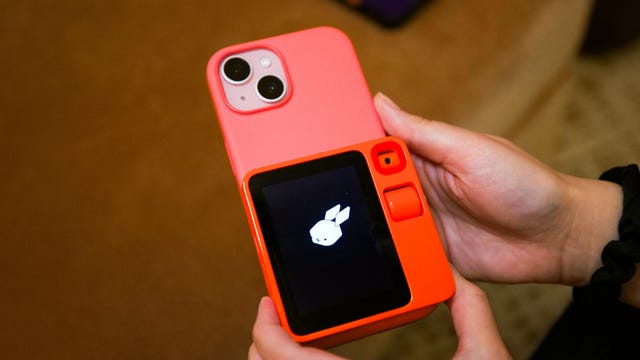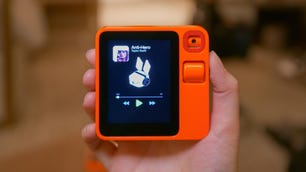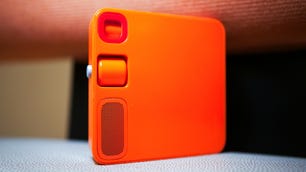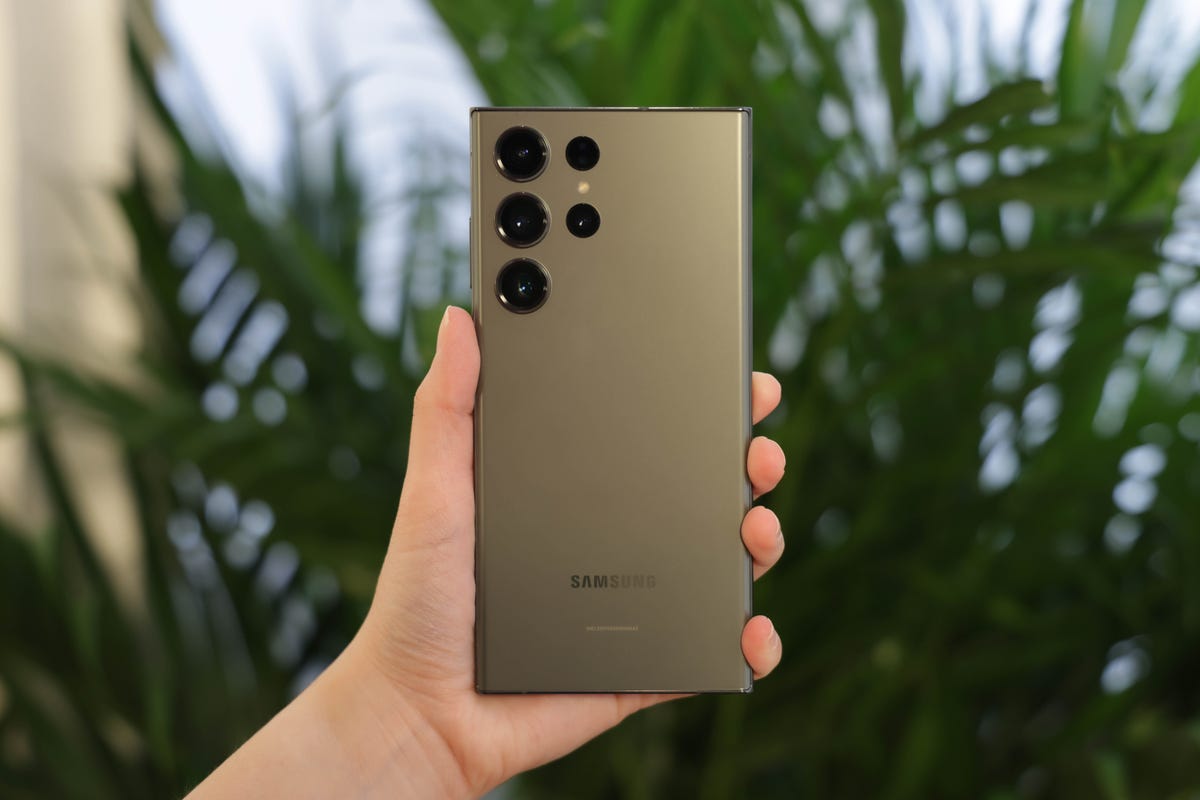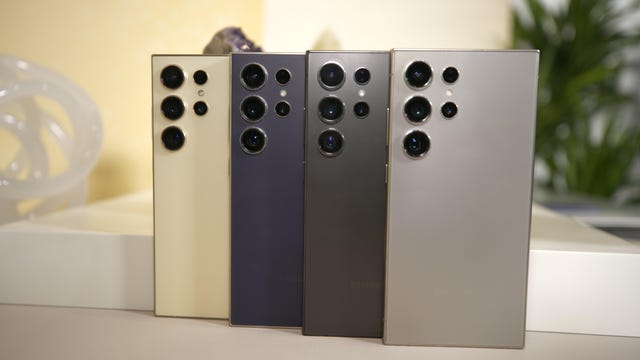The Rabbit R1 can fit in the palm of your hand and will be able to answer questions, launch a Spotify playlist or call a taxi with the push of a button. Sounds familiar, right? The Rabbit R1 isn’t a smartphone in the traditional sense. Instead, it promises to be a dedicated personal assistant powered by AI, and it ships in late March for $199.
Our phones are great at many things, like snapping vacation photos, entertaining us with an endless stream of bite-sized videos and acting as our personal planners. That’s exactly the problem, according to Jesse Lyu, founder and CEO of AI tech startup Rabbit. He thinks the myriad apps and functions available on our phones have stripped away their simplicity, and he’s trying to change that with the R1, which debuted at CES 2024.
You don’t interact with the R1 by opening apps; instead, you press a physical push-to-talk button to ask a question or play a song on Spotify as if you were speaking into a walkie-talkie. The phone’s software is powered by a large action model or an algorithm that can learn from how humans use apps and interfaces so that it can replicate and automate those processes. Lyu likens it to handing your phone to a friend to order takeout rather than doing so yourself.
Read more: Your Next Phone Will Likely Be Smarter, Faster and More Bendy
There’s no shortage of virtual assistants capable of doing almost exactly what Rabbit’s R1 claims to do. Google and Amazon are also injecting their own virtual helpers with generative AI smarts to make them even better at handling complex requests more easily. Lyu sees the need for a purpose-built device for getting things done that’s separate from your phone and therefore less distracting. He argues that just because your phone can do the same thing doesn’t mean it’s the superior experience.
That argument will take a lot of convincing, especially considering how glued to our phones we’ve become. A survey from Reviews.org found that 89% of Americans check their phone within the first 10 minutes of waking up, and 60% sleep with their phone at night. Still, the Rabbit R1, along with startup Humane’s recently announced AI pin, is another sign that tech companies are increasingly looking to build new gadgets around AI. Many have already found Rabbit’s promise to be enticing enough to order an R1. The company announced on Jan. 10 that it sold 10,000 units on its first day of preorders.
The R1 has a simple look
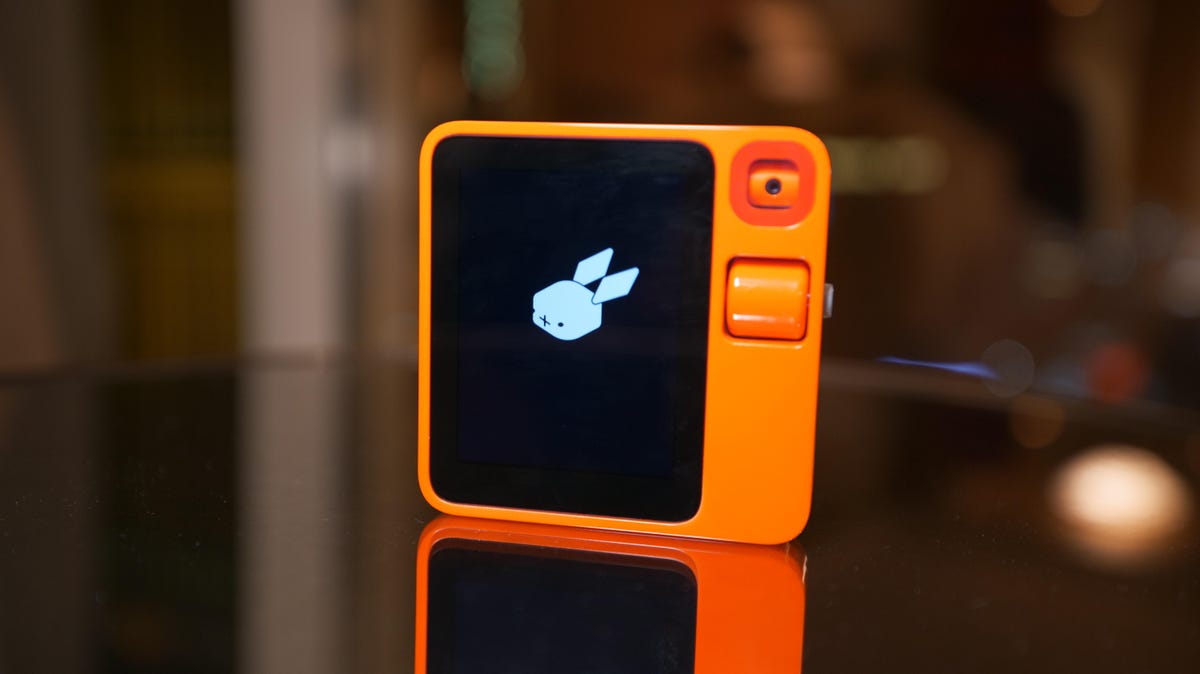
The R1’s bright orange hue, relatively small screen and scroll wheel give it a nostalgic and almost retro look. It’s incredibly lightweight and is literally half the size of your average smartphone, as you can see in the photo of the R1 sitting on top of my iPhone 15 below. In fact, its size and shape feel similar to using a flip phone like the Samsung Galaxy Z Flip or 2023 Motorola Razr when closed, although it’s significantly lighter.
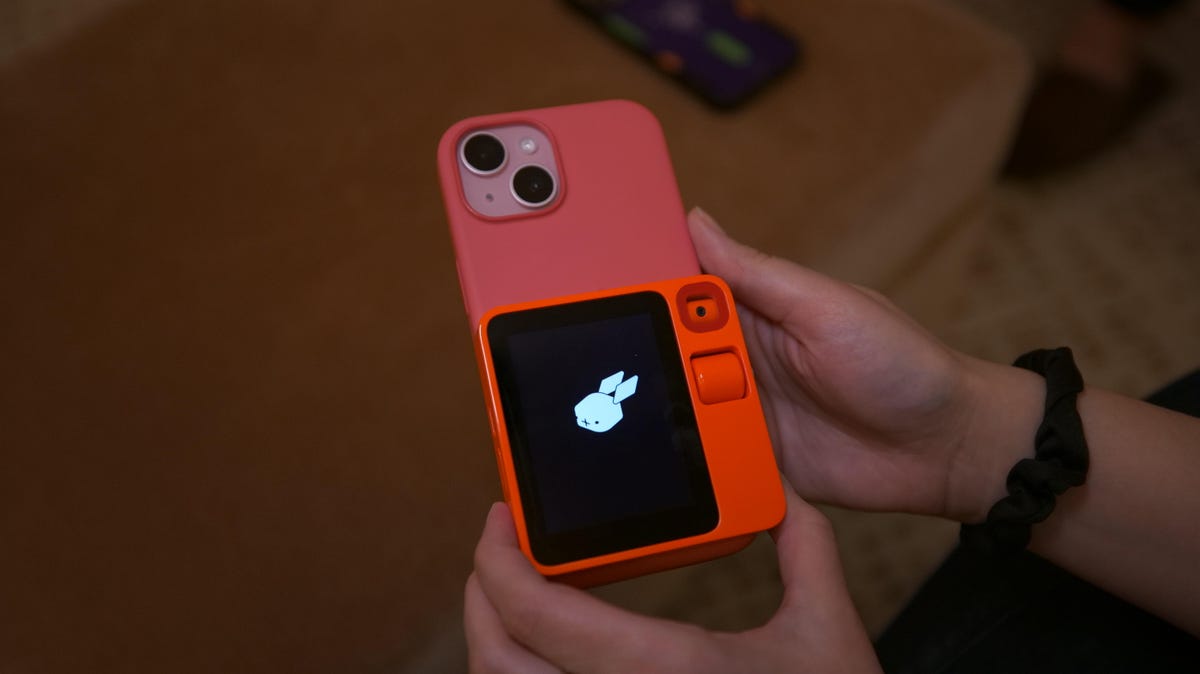
The R1 physically shares some similarities with smartphones, such as a touchscreen display and a camera, but those parts are put to use in different ways.
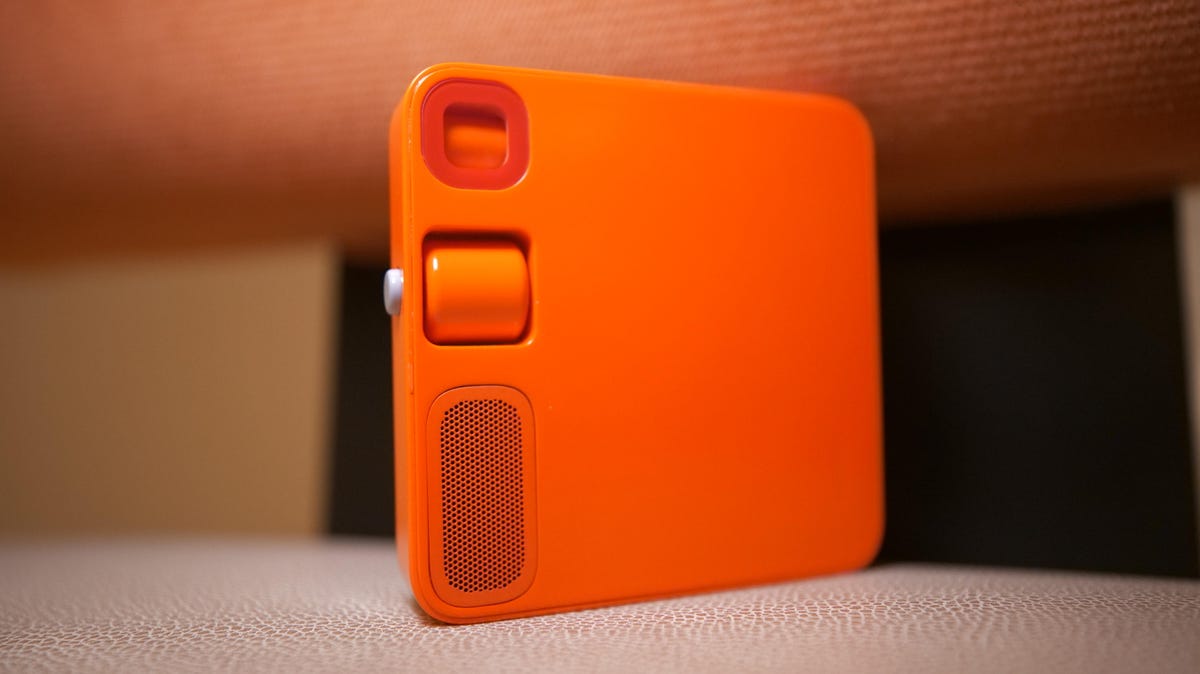
The R1 doesn’t have a traditional phone operating system, for example, but instead uses that 2.88-inch screen to display cards in response to your requests. The camera isn’t really meant for documenting your days on Instagram but rather is intended to assist with visual queries like snapping photos of what’s in your fridge to generate recipe ideas.
Read more: Best of Show: Our Tech Winners of CES 2024
Although it’s not being positioned as a phone, you can certainly make phone calls with it since it has a SIM card slot along with Wi-Fi and cellular connectivity. It runs on a 2.3Ghz MediaTek Helios P35 processor and has 128GB of storage and 4GB of RAM.
It doesn’t run apps, but it can connect to your apps
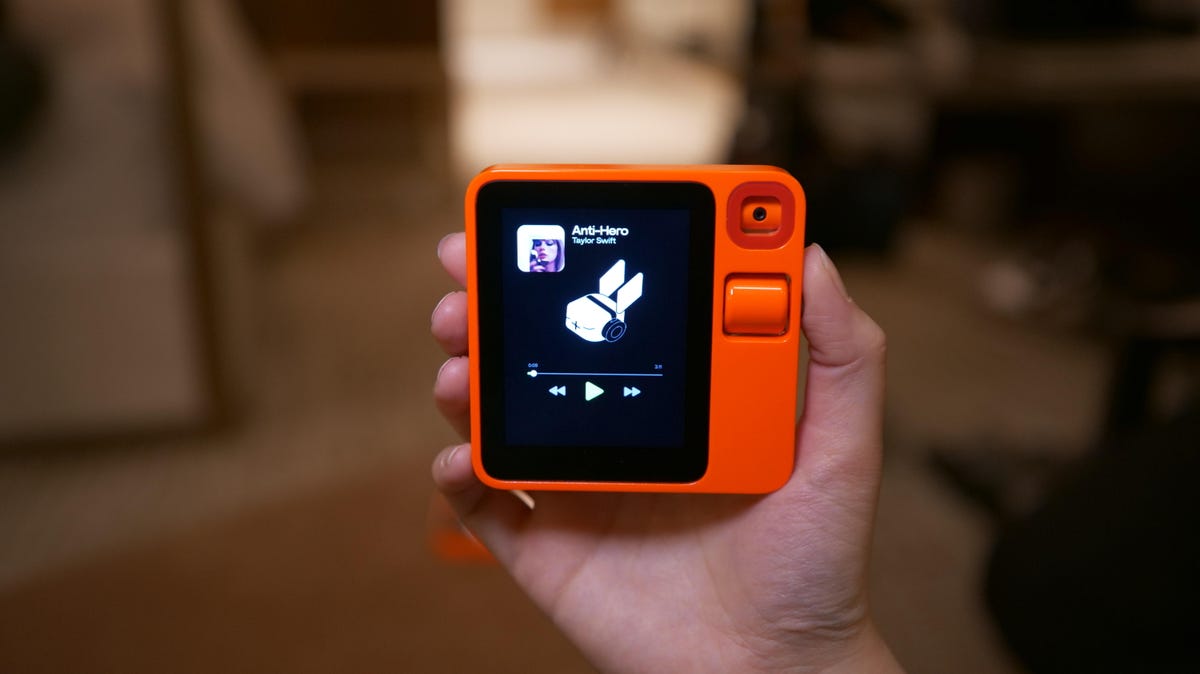
The R1 doesn’t have apps in the traditional sense, but it connects to services to carry out requests. Playing a playlist on Spotify or calling an Uber requires you to link those apps to your Rabbit account through an online portal. That could end up being a cumbersome process, considering you’d have to manually connect any service you’d want Rabbit to factor into your usage. Rabbit says it doesn’t store any login data and that authentication methods happen on the app’s system.
The device uses Rabbit’s proprietary large action model to execute tasks, along with OpenAI’s GPT-4 model to understand your spoken requests. During my brief time trying it, I asked the Rabbit R1 to play music and answer basic knowledge-based questions. The ears on the animated rabbit icon shown on the screen adorably perked up when I held the side button to recite my command. I’ll need to spend more time with it before knowing how well it works as a personal assistant for getting things done more quickly and efficiently than my phone.
With the R1, Rabbit is taking on an ambitious goal by trying to carve out a place for a new gadget in our lives in a world that’s already overrun with screens and sensors. It’s interesting nonetheless to see new hardware developed in response to the increased interest in AI we’ve seen over the past year. Still, Rabbit’s software experience has to be compelling enough to convince you to buy a new device rather than continue to use ChatGPT, Google Bard and other AI helpers on the devices you already own.
For more, check out what’s next beyond the smartphone and the most exciting mobile tech we saw at CES.
Editors’ note: CNET is using an AI engine to help create some stories. For more, see this post.
